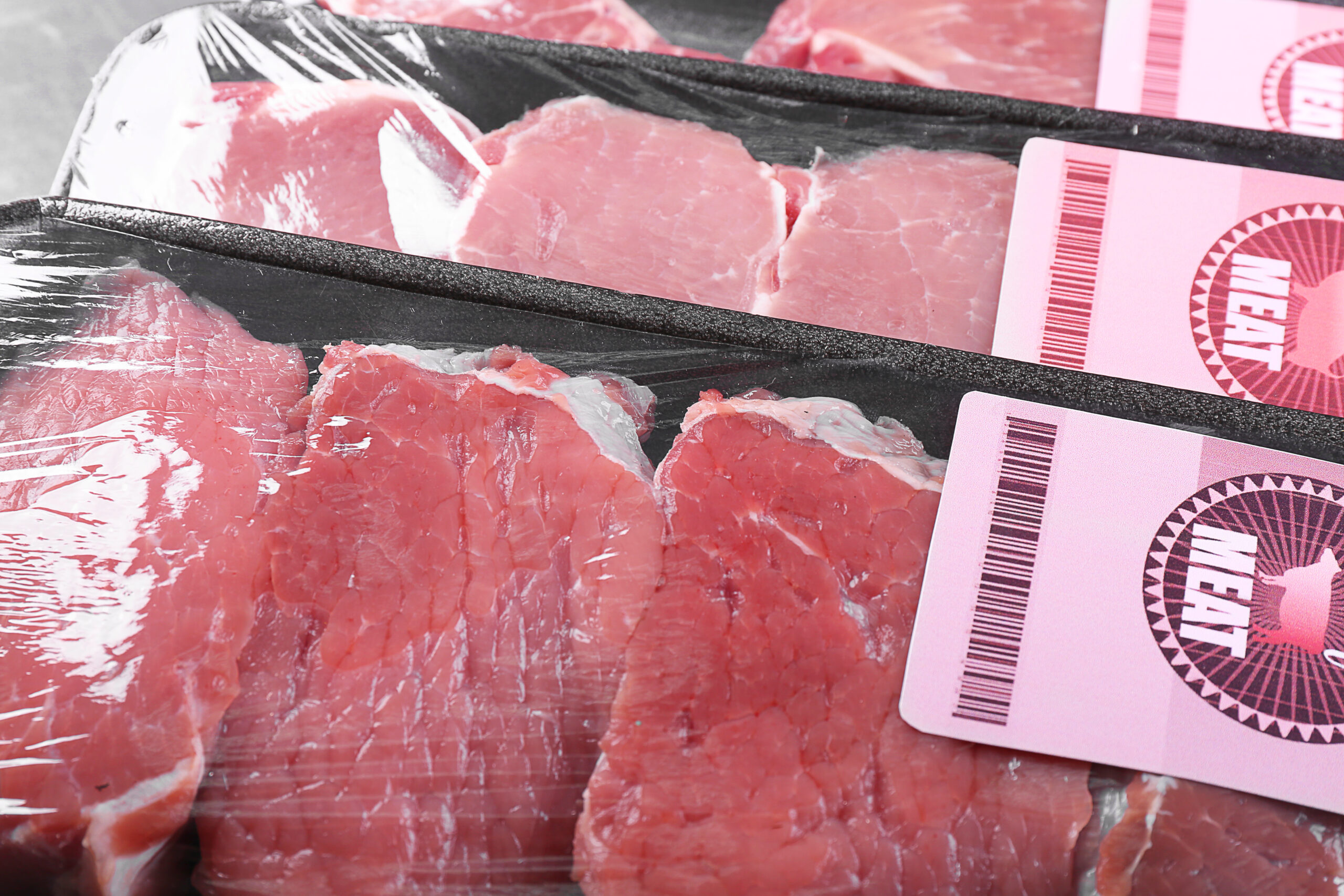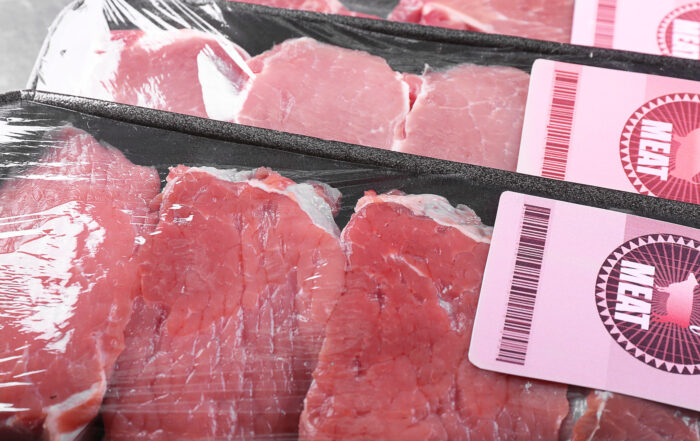
Alternative Proteins: Navigating the Maze of U.S. Federal and State Meat Labeling Requirements
By Xin Tao & Genevieve Razick
The demand for alternative proteins is on the rise in the United States and is estimated to grow from USD 14.2 billion in 2021 to USD 33.75 billion by 2030.[1] Plant-based proteins and cultivated cells are two promising alternatives that are quickly gaining popularity among consumers seeking healthier, sustainable, and ethically conscious food choices.[2] Plant-based proteins are derived from sources such as soy, pea, and rice and are often used as a substitute for animal-based proteins in a variety of foods. Cultivated cells, on the other hand, are cultured from animal cells in bioreactors and provide the same taste and texture of meat without the negative environmental and ethical implications of traditional animal agriculture.
As often is the case with new food technology, the commercialization of these alternative proteins in the United States also raises interesting legal questions. Understanding the legal requirements for labeling alternative proteins is essential for companies to comply with the applicable laws and for consumers to make informed decisions about the products they purchase and consume. Unfortunately, the laws and regulations governing labeling for alternative proteins can be complex and vary across different jurisdictions. In this article, we will explore the labeling requirements that may apply to the two alternative protein sources in more detail, as well as the potential implications for the industry.
I. Federal Legal Framework for Alternative Proteins Labeling
At the federal level, the U.S. Food and Drug Administration (FDA) has primary jurisdiction over the labeling of most food products, including plant-based protein products, while the U.S. Department of Agriculture (USDA) has jurisdiction over the labeling of meat and poultry products, which include most cultivated meat products. However, there may be some overlap in jurisdiction, particularly when it comes to products that contain both meat and non-meat ingredients. As such, companies producing alternative proteins must be familiar with the specific labeling requirements set forth by both agencies to ensure compliance with applicable regulations.
The Federal Food, Drug, and Cosmetic Act (FDCA) provides FDA with the legal authority to regulate the labeling of foods. Under section 403(g)(1) of the FDCA, a food is deemed misbranded if “it purports to be or is represented as” a food for which FDA has established a standard of identity but fails to comply with that standard.[3]
If no standard of identity applies, as is the case with the alternative protein products, section 403(i)(1) of the FDCA requires that a food’s label bear “the common or usual name” of the food.[4] The common or usual name may be a coined term, but it must “accurately identify or describe, in as simple and direct terms as possible, the basic nature of the food or its characterizing properties or ingredients.”[5] A common or usual name “shall be uniform among all identical or similar products and may not be confusingly similar to the name of any other food that is not reasonably encompassed within the same name.”[6] Each “class or subclass of food shall be given its own common or usual name that states, in clear terms, what it is in a way that distinguishes it from different foods.”[7] Finally, if a common or usual name does not exist for the food, the label may bear “[a]n appropriately descriptive term, or when the nature of the food is obvious, a fanciful name commonly used by the public for such food.”[8]
As such, when new foods such as alternative proteins are developed, there is some flexibility for determining the name, which needs to be appropriately descriptive and must be uniform for all identical or similar products, while also different than the names of existing foods.
Under the Federal Meat Inspection Act of 1906[9] and the Poultry Products Inspection Act of 1957 (PPIA),[10] USDA’s Food Safety and Inspection Service (FSIS) regulates the labeling of all meat and poultry products under its jurisdiction, including cattle, sheep, swine, goats, horses, mules, siluriformes (catfish), equines, domesticated chickens, turkeys, ducks, geese, ratites, and squabs to ensure such products are not misbranded.[11] Under these laws, a meat or poultry product is misbranded under the following circumstances: 1) its labeling is false or misleading in any particular;[12] 2) it is offered for sale under the name of another food;[13] 3) it is an imitation of another food, but not labeled as such;[14] or 4) it purports to be or is represented as a food for which a standard of identity (i.e., specific names, terms, and information to be used on a product label) has been prescribed, but it fails to conform to the standard.[15] FSIS reviews and approves meat and poultry product labels and labels that display special statements or claims, such as those not defined by regulation, before they are used in commercial distribution.[16] Cultivated meat products that fall under FSIS jurisdiction will be subject to premarket review and approval under the same process as other special statements or claims, meaning that establishments must provide documentation and data to support the special statements and claims for the label to be approved.[17]
Although both FDA and USDA agreed to develop joint principles for product labeling to ensure cultivated cell products are labeled consistently, neither FDA nor USDA has published rules or guidance specifically related to labeling cell-cultured meat products.[18] Both agencies have, however, sought public comment on the topic.[19] For example, FSIS published an advance notice of proposed rulemaking (ANPR) on September 3, 2021 to solicit public feedback on how meat and poultry products produced using animal cell culture technology should be identified and described. The proposed rulemaking references a petition filed by the United States Cattlemen’s Association on February 9, 2018 requesting that FSIS limit the definition of “meat” to tissue or flesh of animals that have been harvested in the traditional manner, thereby prohibiting foods comprised of or containing cultured animal cells from being labeled “meat.”[20] FSIS has not yet issued a proposed rule on this issue.
II. State Legal Framework for Alternative Proteins Labeling
A number of states have enacted legislation related to alternative proteins.[21] Generally, these laws prohibit the uses of certain terms associated with the traditional meat products (e.g., “meat”) on alternative protein product packaging or labeling.[22] For example, Missouri, the first state to pass a law restricting the labeling of plant-based products as meat in 2018, prohibits the representation of a product as “meat” when the product is not derived from harvested production livestock or poultry.[23] The Missouri Department of Agriculture also issued guidelines to provide standards for the inclusion of certain qualifying language on food packaging (e.g., qualifying language such as “plant-based” to make clear the alternative source of the product).[24] In accordance with the guidelines, products must include a prominent statement on the front of the package, immediately before or immediately after the product name, to indicate that the product is “plant-based,” “veggie,” “lab-grown,” “lab-created,” or to include a comparable qualifier.[25] There must also be a prominent statement on the package that the product is “made from plants,” “grown in a lab,” or a comparable disclosure.[26] If products contain these statements, they are generally not considered to be misrepresented as meat products in violation of Missouri law.[27]
In addition to Missouri, to our knowledge, there are another 13 states that have adopted similar laws that are currently effective. We have provided below a summary of these state labeling laws with the applicable definitions of “meat” and “meat product” when available.
|
State |
Statutes |
Effective Date |
Definition of Meat / Meat Product |
|
Alabama |
Code of Ala. §§ 2-17-10; 2-17-1 |
August 1, 2019 |
“Meat food product” means any product capable of use as human food which is made wholly or in part from any meat or other portion of the carcass of any cattle, sheep, swine, goats or poultry, excepting products which contain meat or other portions of such carcasses only in a relatively small proportion or historically have not been considered by consumers as products of the meat food industry and which are exempted from definition as a meat food product by the commissioner under such conditions as he may prescribe to assure that the meat or other portions of such carcasses contained in such product are not adulterated and that such products are not represented as meat food products. Such term as applied to food products of equines shall have a meaning comparable to that provided in this subdivision with respect to cattle, sheep, swine, goats and poultry.
|
|
Arkansas |
Ark. Code Ann. § 2-1-301 et. seq. |
July 24, 2019 |
“Meat” means a portion of a livestock, poultry, or cervid carcass that is edible by humans. “Meat” does not include a: (i) synthetic product derived from a plant, insect, or other source; or (ii) product grown in a laboratory from animal cells.
“Meat product” means an agricultural product that is edible by humans and made wholly or in part from meat or another portion of a livestock, poultry, or cervid carcass.
|
|
Georgia |
O.C.G.A. § 26-2-152 |
December 31, 2020 |
It shall be unlawful for any person, partnership, firm, company, or corporation to label, advertise, or otherwise represent any food produced or sold in this state as meat or any product from an animal unless each product is clearly labeled by displaying the following terms prominently and conspicuously on the front of the package, labeling cell cultured products with “lab-grown,” “Lab-created,” or “grown in a lab” and plant based products as “vegetarian,” “veggie,” “vegan,” “plant based,” or other similar term indicating that the product is plant based and does not include the flesh, offal, or other by-product of any part of the carcass of a live animal that has been slaughtered.
|
|
Kansas |
Kan. Stat. Ann. §§ 65-656, 65-665 |
July 1, 2022 |
“Meat” means the same as provided in 9 C.F.R. § 301.2, as in effect on January 1, 2022.
“Meat food product” means the same as provided in 9 C.F.R. § 301.2, as in effect on January 1, 2022.
|
|
Kentucky |
Ky. Rev. Stat. § 217.035 |
June 27, 2019 |
A food shall be deemed to be misbranded: … If it purports to be or is represented as meat or a meat product and it contains any cultured animal tissue produced from in vitro animal cell cultures outside of the organism from which it is derived.
|
|
Louisiana |
La. Rev. Stat. tit. 3, § 4743 |
October 1, 2020 |
“Meat” means a portion of a beef, pork, poultry, alligator, farm-raised deer, turtle, domestic rabbit, crawfish, or shrimp carcass that is edible by humans but does not include a: (a) synthetic product derived from a plant, insect, or other source. (b) cell cultured food product grown in a laboratory from animal cells.
“Meat product” means a type of agricultural product that is edible by humans and made wholly or in part from meat or another portion of a beef, pork, poultry, alligator, farm-raised deer, turtle, domestic rabbit, crawfish, or shrimp carcass.
|
|
Mississippi |
Miss. Code Ann. § 75-35-15 |
July 1, 2019 |
A food product that contains cultured animal tissue produced from animal cell cultures outside of the organism from which it is derived shall not be labeled as meat or a meat food product. A plant-based or insect-based food product shall not be labeled as meat or a meat food product.
|
|
Missouri |
Mo. Rev. Stat. § 265.494 |
August 28, 2018 |
“Meat” means any edible portion of livestock, poultry, or captive cervid carcass or part thereof.
|
|
Montana |
Mont. Code Ann. §§ 50-31-103; 50-31-203; 50-31-208; 81-9-217
|
October 1, 2019 |
“Meat” means the edible flesh of livestock or poultry and includes livestock and poultry products. This term does not include cell-cultured edible products as defined in this section.
|
|
North Dakota |
N.D. Cent. Code §§ 4.1-31-01; 4.1-31-05.1; 19-02.1 |
August 1, 2019 |
“Meat” means the edible flesh of an animal born and harvested for the purpose of human consumption.
“Meat food product” means a product usable as human food which contains any part of a carcass from an animal born and harvested for the purpose of human consumption. The term does not include any product that contains any part of an animal carcass in a relatively small proportion or which historically has not been considered by consumers as a product of the meat food industry, and which is not represented as a meat food product.
|
|
Oklahoma |
Okla. Stat. tit. 2, § 5-107
|
November 1, 2020 |
“Meat” means any edible portion of livestock or part thereof.
|
|
South Carolina |
S.C. Code Ann. § 47-17-510
|
May 16, 2019 |
Article 1 of the same title provides the following definitions:
The term “meat” means the edible part of the muscle of cattle, sheep, swine or goats which is skeletal or which is found in the tongue, in the diaphragm, in the heart, or in the esophagus, with or without the accompanying and overlying fat, and the portions of bone, skin, sinew, nerve, and blood vessels which normally accompany the muscle tissue and which are not separated from it in the process of dressing. It does not include the muscle found in the lips, snout and ears.
The term “meat food product” means any article of food, or any article intended for or capable of use as human food, which is derived or prepared, in whole or in part, from any portion of any livestock, unless exempted by the Director upon his determination that the article (1) contains only a minimal amount of meat and is not represented as a meat food product or (2) is for medicinal purposes and is advertised only to the medical profession.
|
|
South Dakota |
S.D. Codified Laws §§ 39-4-26; 39-5-6 |
July 1, 2019 |
“Meat,” the edible part of the muscle of cattle, bison, sheep, swine, goats, equine, ratites, captive cervidae, and other species as requested by the owner and authorized by the secretary, which is skeletal or which is found in the tongue, in the diaphragm, in the heart, or in the esophagus, with or without the accompanying and overlying fat, and the portions of bone, skin, sinew, nerve, and blood vessels which normally accompany the muscle tissue and which are not separated from it in the process of dressing. It does not include the muscle found in the lips, snout or ears.
“Meat by-product,” any edible part other than meat which has been derived from one or more cattle, bison, sheep, swine, goats, equine, ratites, captive cervidae, and other species as requested by the owner and authorized by the secretary.
|
|
Wyoming |
Wyo. Stat. §§ 35-7-111; 35-7-119 |
July 1, 2020 |
“Meat” means the edible part of the muscle of animals, which is skeletal or which is found in the tongue, in the diaphragm, in the heart or in the esophagus, with or without the accompanying or overlying fat, and the portions of bone, skin, sinew, nerve and blood vessels which normally accompany the muscle tissue and which are not separated from it in the process of dressing, but shall not include the muscle found in the lips, snout or ears, nor any edible part of the muscle which has been manufactured, cured, smoked, cooked or processed.
|
III. State Labeling Law First Amendment Challenges
These state laws generally prohibit the use of the term “meat” unless the meat products are harvested from an animal carcass during the traditional meat processing. While avoiding consumer confusion is often listed as the intent of these state laws, the labeling restrictions on the alternative protein products have been subject to multiple legal challenges in the federal court system as violations of the First Amendment under the U.S. Constitution.[28] The First Amendment restricts federal and state governments from depriving citizens of their freedom of speech, and several challengers have alleged that these state laws and their “censorship” requirements restrict the freedom of speech. Many of these legal challenges are still pending and could significantly impact and potentially clarify the requirements for accurately labeling a cell-cultured or plant-based meat product.
For example, in Turtle Island Foods, SCP et al. v. Richardson, Turtle Island Foods dba Torfurky Company and the Good Food Institute brought a case in the U.S. District Court for the Western District of Missouri challenging the constitutionality of the Missouri labeling law.[29] The plaintiffs argued that because the Missouri law restricted them from using references to meat products, the law deprived them of their First Amendment right to free speech.[30] The relief sought by the plaintiffs was a preliminary injunction to prevent the state of Missouri from enforcing the Missouri labeling law and its labeling restrictions.[31] The district court denied preliminary injunction, finding that the plaintiffs had not met the required legal threshold to prove a substantial likelihood of success on the merits related to the First Amendment challenge.[32] The district court determined that the law only prohibited misleading speech (i.e., misleading consumers into believing that a product is meat from livestock when it is in fact plant-based or lab-grown), and was not so broad as to prohibit the commercial speech that the plaintiffs used on the products at issue.[33] Plaintiffs appealed denial of the preliminary injunction to the Eighth Circuit Court of Appeals. On March 29, 2021, the Eighth Circuit Court of Appeals affirmed the decision, finding that the district court acted within its discretion in reading the statute as not prohibiting the commercial speech at issue, and that there was no reason to “disturb the district court’s ruling as to Plaintiffs’ likelihood of success on the merits.”[34]
In another case, Turtle Island Foods SPC v. Soman, the same company, Tofurky Company (joined by the Good Food Institute, the Animal Legal Defense Fund, and the American Civil Liberties Union) challenged the Arkansas “Truth in Labeling of Agricultural Products that are Edible by Humans Act,”[35] prohibiting purveyors of plant- or cell-based meats from using the word “meat” and related terms (e.g., “sausage”) to describe a product that is a plant-based meat alternative in the District Court for the Eastern District of Arkansas.[36] The plaintiffs sought to temporarily enjoin the State of Arkansas from enforcing the law on First Amendment and commercial speech challenges.[37] The U.S. District Court entered a judgment in favor of the plaintiffs and enjoined the defendant from enforcing certain provisions of the law regarding misbranding or misrepresenting an agricultural product as applied to Tofurky.
IV. Implications for Alternative Protein Industry
As plant-based protein products continue to gain momentum in the marketplace, and we approach commercialization of cultivated cells, the U.S. legal framework for their labeling continues to evolve at both the federal and state levels. In light of the lack of clarity from FDA and USDA on the labeling of the cultivated cells, as well as state laws restricting the use of terms such as “meat” for alternative protein products, the alternative protein industry must actively seek to understand and comply with the applicable federal and state requirements.
For cultivated meat products, in particular, we recommend the industry seek guidance from USDA to obtain clarity on the following, when USDA eventually issues its proposed rule on labeling: 1) If new terms should be created to distinguish from traditional meat products, should the industry use “cell cultured,” “cell cultivated,” “cell-based,” or some other terms? 2) If a cultivated meat product is used as an ingredient in other food applications, how should it be declared on the label?
Monitoring state labeling law First Amendment challenges is also crucial for the alternative protein industry. While federal regulations provide a baseline for food labeling requirements, states can also enact their own regulations that go beyond the federal standards. These state labeling laws can create a patchwork of requirements that are difficult for companies to navigate and can increase costs for compliance. Notably, state regulations can face legal challenges, particularly under the First Amendment’s protection of commercial speech. In recent years, several states have faced legal challenges to their labeling regulations by the alternative protein industry. As such, it is important for companies in the industry to stay informed about these challenges and to work with industry organizations, legal experts, and of course federal and state regulatory agencies to ensure that their labeling practices are in compliance with applicable requirements.
[1] See The Brainy Insights, Alternative Protein Market to Garner $33.75 Billion By 2030, at 10.1% CAGR, Says The Brainy Insights, PR Newswire (Aug. 29, 2022, 12:10 PM), https://www.prnewswire.com/news-releases/alternative-protein-market-to-garner-33-75-billion-by-2030–at-10-1-cagr-says-the-brainy-insights-301613783.html.
[2] While as of today, there are no commercial cultivated cells in the United States, two cultivated meat companies have received FDA’s letter of no-objection and are waiting for USDA to review the process.
[3] 21 U.S.C. § 343(g)(1).
[4] 21 U.S.C. § 343(i)(1).
[5] 21 C.F.R. § 102.5(a).
[6] Id.
[7] Id.
[8] 21 C.F.R. § 101.3(b)(3).
[9] 21 U.S.C. § 601 et seq.
[10] 21 U.S.C. § 451 et seq.
[11] 21 U.S.C. § 607(d); 21 U.S.C. § 457(c).
[12] 21 U.S.C. § 601(n)(1); 21 U.S.C. § 453(h)(1).
[13] 21 U.S.C. § 601(n)(2); 21 U.S.C. § 453(h)(2).
[14] 21 U.S.C. § 601(n)(3); 21 U.S.C. § 453 (h)(3).
[15] 21 U.S.C. § 601(n)(7); 21 U.S.C. § 453(h)(7).
[16] 21 U.S.C. § 607(d); 21 U.S.C. § 457(c).
[17] FSIS, Labeling of Meat or Poultry Products Comprised of or Containing Cultured Animal Cells, 86 Fed. Reg. 49491, 49493 (proposed Sept. 3, 2021).
[18] Id. at 49494.
[20] FSIS, Labeling of Meat or Poultry Products Comprised of or Containing Cultured Animal Cells, 86 Fed. Reg. 49491, 49494 (proposed Sep. 3, 2021).
[21] See e.g., Ky. Rev. Stat. § 217.035; Miss. Code Ann. § 75-35-15.
[22] See e.g., Okla. Stat. tit. 2, § 5-107(C)(1).
[23] Mo. Rev. Stat. § 265.494(7).
[24] Department of Agriculture State of Missouri, Missouri’s Meat Advertising Law, Aug. 30, 2018.
[25] Id. at 2.
[26] Id.
[27] Id.
[28] See, e.g., Turtle Island Foods, SCP v. Richardson, 425 F. Supp. 3d 1131 (W.D. Mo. 2019), aff’d, 992 F.3d. 694 (8th Cir. 2021).
[29] Id. at 1134–35.
[30] Id.
[31] Id.
[33] Id.
[34] Turtle Island Foods, SCP v. Richardson, 992 F.3d. 694, 704 (8th Cir. 2021).
[35] Ark. Code. Ann. § 2-1-305.
[36] Turtle Island Foods, SPC v. Soman, 424 F. Supp. 3d 552, 561 (E.D. Ark. 2022).
[37] Id.
Update Magazine
Summer 2023

 XIN TAO is the head of Baker McKenzie’s U.S. Food and Drug Law Practice. A former research biochemist, Tao’s practice focuses on empowering global scientific innovation through legal compliance, including providing regulatory counsel to companies with novel foods and emerging and established companies on launching and promoting innovative products such as plant-based proteins and cell-cultured meat.
XIN TAO is the head of Baker McKenzie’s U.S. Food and Drug Law Practice. A former research biochemist, Tao’s practice focuses on empowering global scientific innovation through legal compliance, including providing regulatory counsel to companies with novel foods and emerging and established companies on launching and promoting innovative products such as plant-based proteins and cell-cultured meat. GENEVIEVE RAZICK is an associate in Baker McKenzie’s U.S. Food and Drug Law Practice. Razick’s practice focuses on advising life sciences companies on a broad range of healthcare and FDA regulatory matters and conducting regulatory due diligence as it relates to the sale, acquisition, and restructuring of FDA-regulated entities.
GENEVIEVE RAZICK is an associate in Baker McKenzie’s U.S. Food and Drug Law Practice. Razick’s practice focuses on advising life sciences companies on a broad range of healthcare and FDA regulatory matters and conducting regulatory due diligence as it relates to the sale, acquisition, and restructuring of FDA-regulated entities.





